Having thoroughly enjoyed our previous visits to this historical county, we were only too pleased to have the chance to explore further during Summer 2018. This time, we decided to experience what was on the doorstep or within a short drive from our base in Blyth.
When it comes to finding a place to stay in this neck of the woods or even further up the Northumberland coast, we’d always recommend choosing one of the fine inns owned by The Inn Collection.
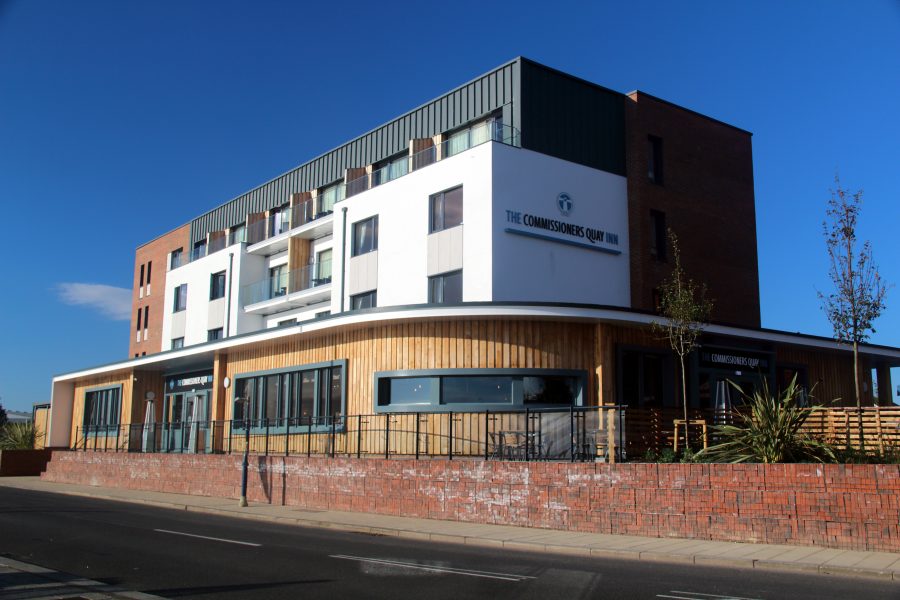
(c) Richard Webber
We chose the Commissioner’s Quay Inn, which takes pole position on Blyth’s historic quay. Although its doors opened a couple of years ago now, it hasn’t lost any of its contemporary charm and we can’t recommend it highly enough (see the stand-alone review within Travellowdown’s “Accommodation” section).
Here, we’ve selected six family favourites in this corner of Northumberland…
Ridley Park
Conveniently situated just a short walk from our hotel, these large, free-to-enter gardens with open spaces for play, along with formal planting, are very popular with locals and visitors alike throughout the year.
There are tennis courts, bowling green, two large and very well-equipped children’s play areas, water splash zone for the summer months and much, much more; there are also free toilets – a rarity these days.
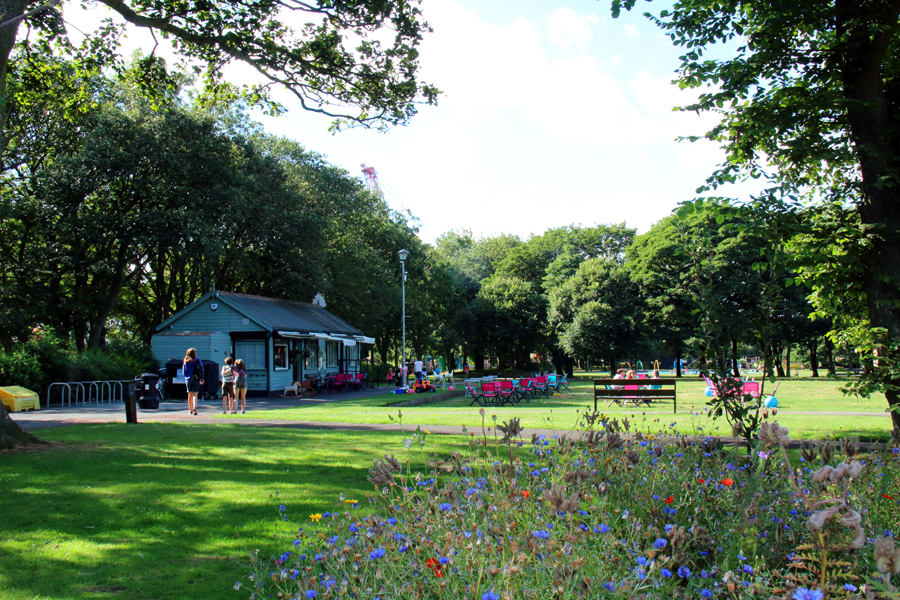
(c) Richard Webber
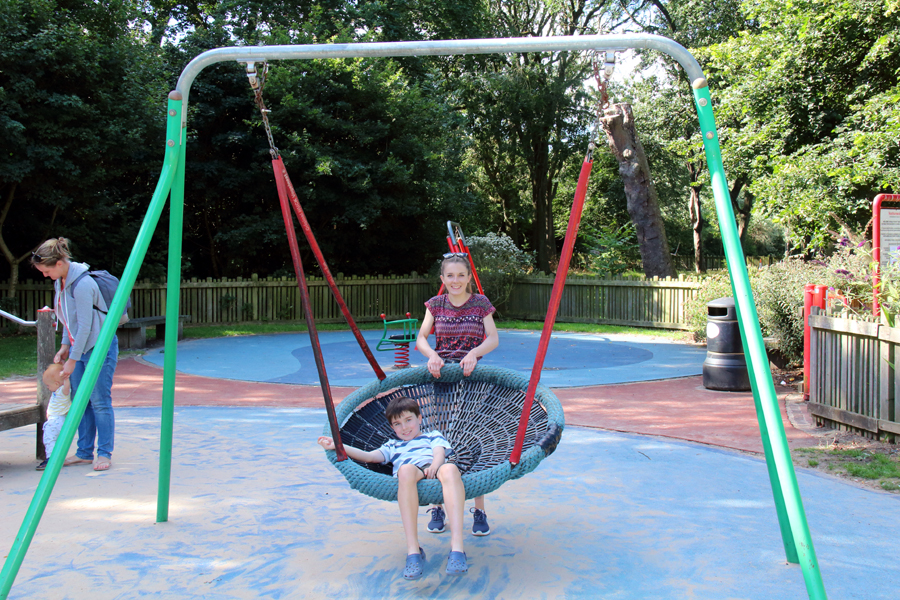
(c) Richard Webber
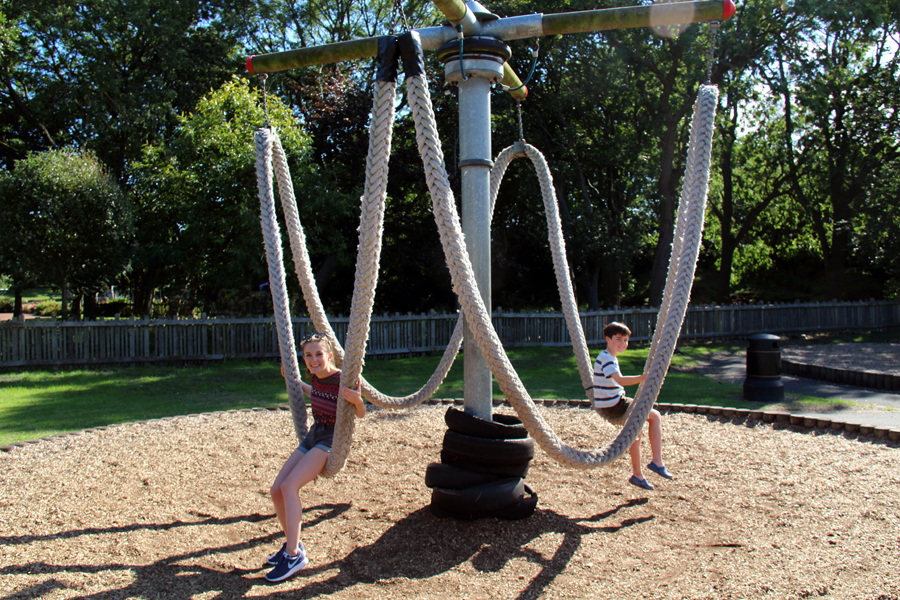
(c) Richard Webber
First established in 1904 on land donated by Viscount Matthew White Ridley, the park is certainly a place to come and spend a sunny afternoon. Why not try a coffee in the quirky café on the green with its large outside seating area and toys to keep the kids amused?
Just one negative: strangely, dogs were allowed off leads in the park and purely “discouraged” from play areas. During our visit, this did lead to some rather boisterous animals darting about amongst the café’s seats, not always welcomed if small children are running around.
Blyth Beach
After visiting the park you could, as we did, continue your walk to Blyth Beach. However, to do this, you have to walk along the main road which is a bit noisy and difficult with young children. Alternatively, jump in the car and you’ll be there in minutes.
For those who do arrive by car, there is a car park at the start of the beach.
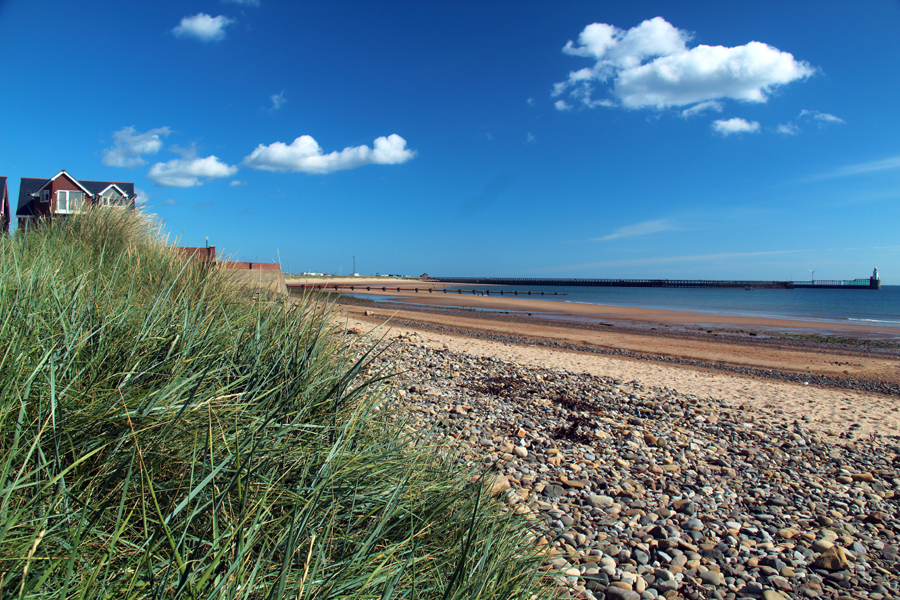
(c) Richard Webber
From here you can stroll south along the long sandy beach or its promenade until you reach the 20 brightly-coloured beach huts lighting up the seafront. Here, you’ll also find a café, toilets, showers and a large children’s play area.
Newbiggin-by-the-Sea & Maritime Museum
Having spent the previous day close to home we decided to take the short trip up the coast to Newbiggin-by-the-Sea, a small town just 15 minutes away by car. On arrival, it was pleasing to find a large free car park.
The beach area underwent massive redevelopment in 2007, having suffered from erosion over the years, with over 500,000 tonnes of sand transported to the beach from Skegness. We visited on a sunny day and plenty of families were playing on the beach.
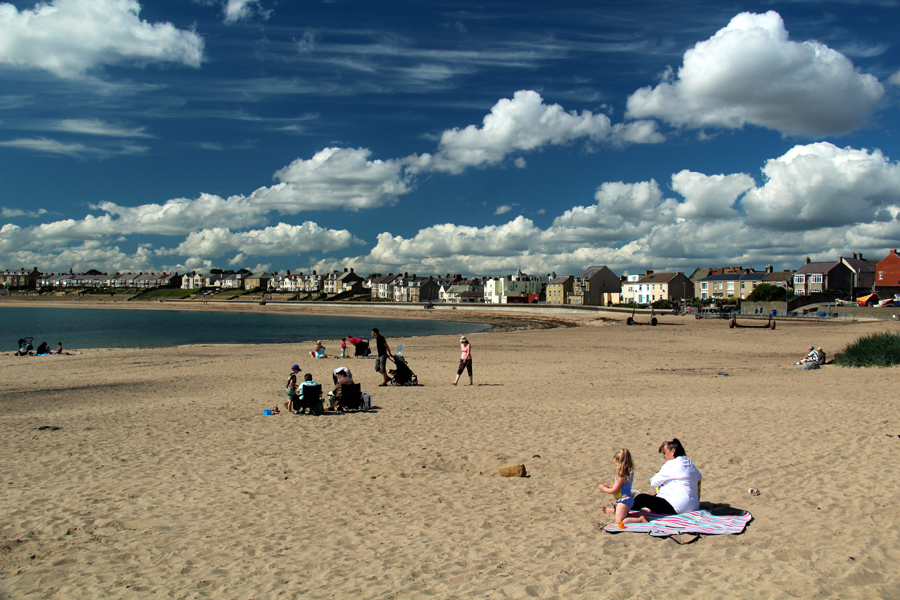
(c) Richard Webber
The redevelopment project also involved constructing a new breakwater which now attracts attention in its own right, thanks to the 12.5 metre statue, “The Couple”, designed by artist Sean Henry, taking centre stage in the bay.
As well as seeing the beach, our other objective was to visit the Newbiggin Maritime Museum (Adults £2.50, Children £1.50, Families £7.00). This small but informative museum tells the story of the coastal town’s fishing industry with ground floor displays dominated by an example of a fishing coble. There are interesting artefacts and an enlightening video revealing what life was like back in the days when fishing was an integral part of the community.
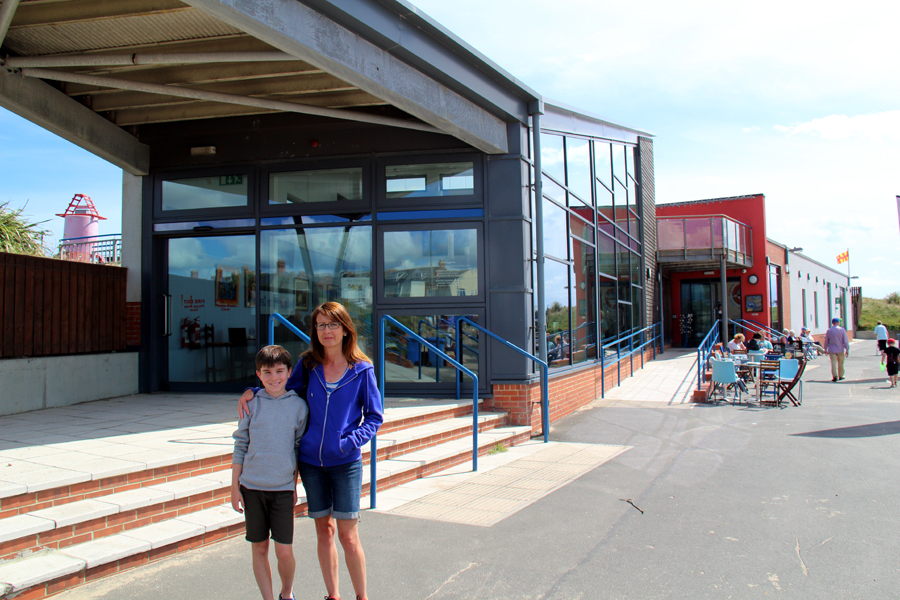
(c) Richard Webber
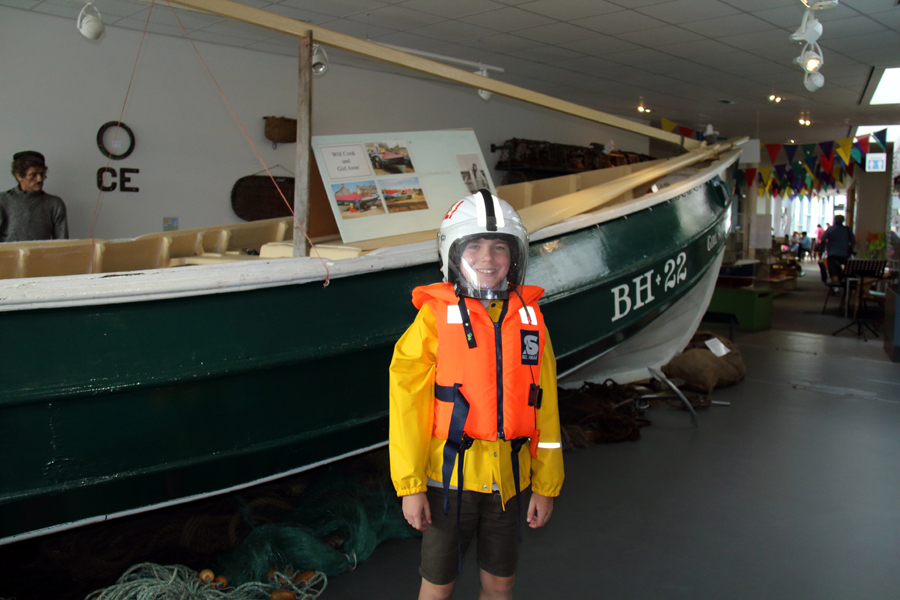
(c) Richard Webber
On the smaller upper level, you’ll find the Mary Joicey, the last Newbiggin all-weather lifeboat; kids also get the chance to see what they look like as a member of the lifeboat crew in the dressing-up corner.
To round off the day at Newbiggin, make sure you pop in to the Breakwater Café, attached to the museum. It affords great views across the bay and has a good value menu.
Northumberlandia
One attraction not to be missed is Northumberlandia, a huge landform sculpture 15 minutes’ drive south-west of Blyth. Shaped like a reclining naked lady, it was finished in 2012 and is a must for your itinerary.
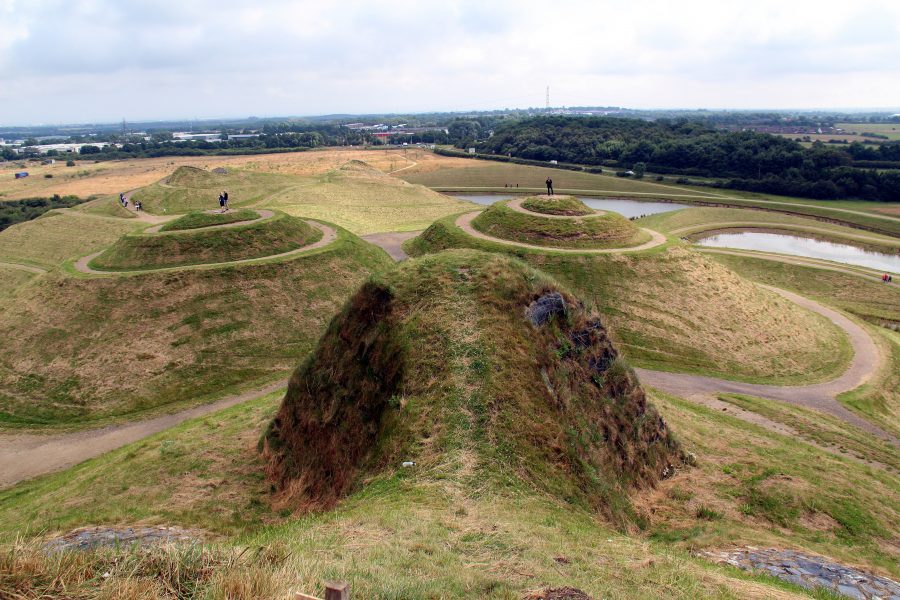
(c) Richard Webber
It provides walking opportunities, too. We enjoyed strolling around the landform, where paths wind their way all over its undulating shape!
Free to enter but recommended £2 donation for car park.
Woodhorn Museum
Among the other highlights of our visit was Woodhorn Museum, covering everything from coalmining to contemporary art.
We enjoyed the section dedicated to Northumberland’s industrial past and, in particular, Coal Town. This very realistic exhibition transports you back in time – to 1918, when a teenager started his first shift.
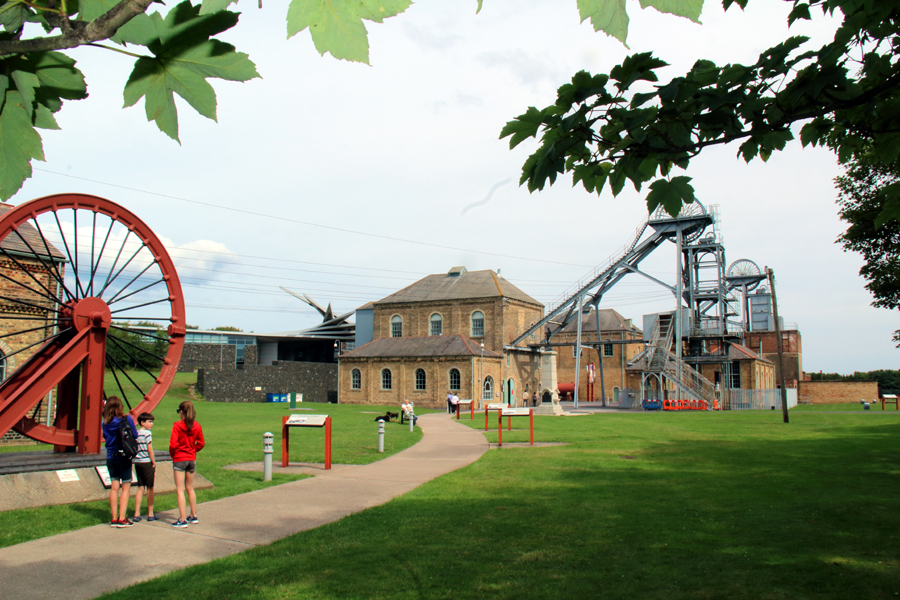
(c) Richard Webber
Thanks to the sound effects and brilliant visual displays, you get to truly appreciate what it must have been like working down the pit while discovering plenty of interesting facts along the way. Did you know, for example, that coal is 50 million years older than the first dinosaurs?
Adults £7, Children under 16 free. Tickets give unlimited free returns for 12 months.
St Mary’s Lighthouse
Our hotel was nicely positioned for exploring this stretch of Nortumberland’s coastline so we drove just 15 minutes south to visit St Mary’s Lighthouse and Visitor Centre.
Climbing the 137 steps to the top of the lighthouse certainly burnt off a few calories but the effort was worth it for the fine views of the North-East coast. We particularly enjoyed the exhibition detailing the lighthouse’s history.
£7.70 for a family ticket.
Further information:
www.commissionersquayinn.com, tel: 01670 335060
www.nmcentre.org.uk, tel: 01670 811951
www.museumsnorthumberland.org.uk, 01670 624455
Reviewed: August 2018

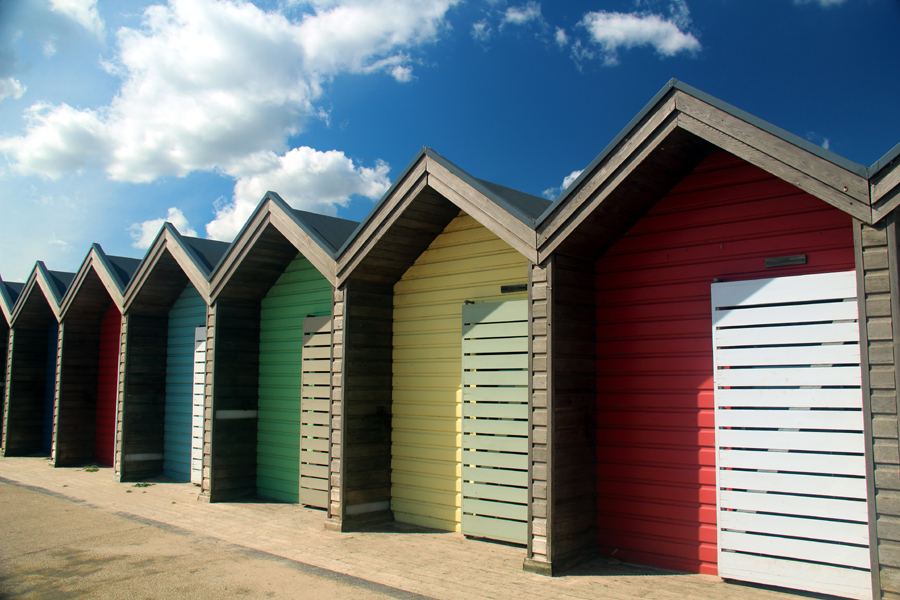
Leave A Comment